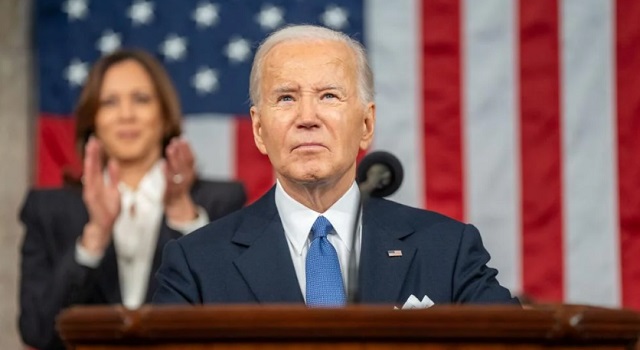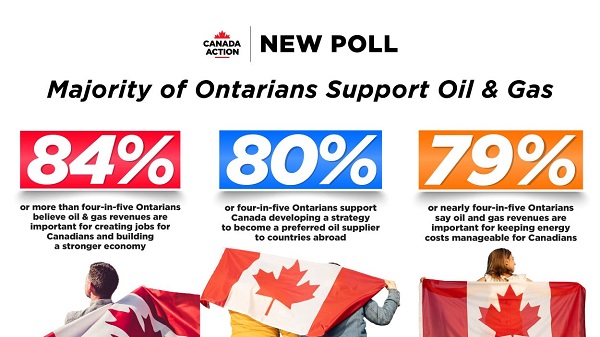International
BIDEN OUT: President exits race, endorses VP Harris as his successor

From The Center Square
President Joe Biden ended his bid for reelection Sunday, opening the door for Vice President Kamala Harris or another top Democrat to replace him atop the ticket.
In a statement posted to X, Biden said he is stepping aside “in the “best interest of my party and the country.”
“It has been the greatest honor of my life to serve as your President,” Biden said. “And while it has been my intention to seek reelection, I believe it is in the best interest of my party and the country for me to stand down and to focus solely on fulfilling my duties as president for the remainder of my term.”
The historic withdrawal comes just weeks before the Democratic National Convention is set to take place Aug. 19 in Chicago, where Biden’s pledged delegates will face tough decisions on who to replace him with.
Concerns over Biden’s age, declining cognitive abilities and physical health led more and more elected Democrats in Congress to call for his exit, seemingly on a daily basis.
Biden’s support among Democrats began to freefall after his performance in the June 27 debate with former President Donald Trump, when Biden stumbled over his own words and often lost his train of thought.
At a NATO news conference a couple of weeks later, Biden referred to Kamala Harris as “Vice President Trump” when asked if he thought Harris was ready to be president if he were to step aside, one of many gaffes during the summit.
During the Republican National Convention in Milwaukee last week, where Trump officially accepted the GOP nomination for president just days after a failed assassination attempt on his life at a campaign rally in Pennsylvania, Biden was hunkered down at his Delaware home, recovering from his third bout with COVID-19.
Biden has not fared well in 12 major polls tracking the 2024 general election in recent weeks, leading down-ballot Democratic candidates for Congress to raise concerns that his declining support could help Republicans to retake the White House and the U.S. Senate and solidify their majority in the U.S. House.
Trump led by an overall average of 3 points in the 12 polls. Biden only led in one poll, where he had a 2-point edge in the NPR/PBS/Marist poll. Trump and Biden were tied in the ABC News/Washington Post poll. Trump led in the 10 other polls as of Thursday.
In The Center Square Voters’ Voice Poll of nearly 2,300 likely voters, conducted after the June 27 debate but before the attempted assassination on Trump, Biden’s deficit grew to three full percentage points nationally. The poll has a margin of error of 2.1%.
Until Sunday, Biden defiantly opposed calls to step aside.
While his June debate performance seemed to seal Biden’s fate, his deteriorating cognitive abilities made news months earlier.
In February, the Report of the Special Counsel investigating Biden’s taking classified documents to his home revealed the president had issues with his memory.
“We have also considered that, at trial, Mr. Biden would likely present himself to a jury, as he did during our interview of him, as a sympathetic, well-meaning, elderly man with a poor memory,” the report stated.
The report also stated, “Mr. Biden’s memory also appeared to have significant limitations – both at the time he spoke to [Biden ghost writer Mark] Zwonitzer in 2017, as evidenced by their recorded conversations, and today, as evidenced by his recorded interview with our office. Mr. Biden’s recorded conversations with Zwonitzer from 2017 are often painfully slow, with Mr. Biden struggling to remember events and straining at times to read and relay his own notebook entries. In his interview with our office, Mr. Biden’s memory was worse. He did not remember when he was vice president, forgetting on the first day of the interview when his term ended (‘if it was 2013 – when did I stop being Vice President?’), and forgetting on the second day of the interview when his term began (‘in 2009, am I still Vice President?’). He did not remember, even within several years, when his son Beau died.”
Business
Federal funds FROZEN after massive fraud uncovered: Trump cuts off Minnesota child care money

The Trump administration has cut off all federal child care payments to Minnesota, ordering a sweeping audit of the state’s day care system as investigators dig into what officials describe as one of the largest fraud schemes ever tied to social service programs.
“We have frozen all child care payments to the state of Minnesota,” Deputy Health and Human Services Secretary Jim O’Neill wrote Tuesday afternoon, saying the move comes after mounting evidence that taxpayer dollars were being siphoned to sham or non-operational day care centers. The freeze follows a viral investigative video that put a national spotlight on facilities across Minneapolis that were receiving large sums of public money despite appearing closed or barely functioning.
According to Alex Adams, assistant secretary at HHS’s Administration for Children and Families, Minnesota has already received roughly $185 million in federal child care funding this year alone. Those funds, the administration says, will remain locked down until the state can demonstrate that payments are being used lawfully. “Funds will be released only when states prove they are being spent legitimately,” Adams said.
We have frozen all child care payments to the state of Minnesota.
You have probably read the serious allegations that the state of Minnesota has funneled millions of taxpayer dollars to fraudulent daycares across Minnesota over the past decade.
Today we have taken three actions… pic.twitter.com/VYbyf3WGop
— Deputy Secretary Jim O'Neill (@HHS_Jim) December 30, 2025
O’Neill accused Minnesota officials of allowing abuse to fester for years, alleging the state has “funneled millions of taxpayer dollars to fraudulent daycares across Minnesota over the past decade.” To halt further losses, HHS outlined a series of immediate enforcement steps. Going forward, states seeking reimbursement through the Administration for Children and Families will be required to provide receipts or photographic proof documenting how funds are spent.
The department has also formally demanded that Gov. Tim Walz order a “comprehensive audit” of the day care centers flagged by investigators. O’Neill said the review must include attendance records, licensing documents, complaints, investigative files, and inspection reports. He pointed directly to a video published Friday by YouTuber Nick Shirley, who visited multiple Minneapolis-area centers listed as receiving millions in public funds but found locations that appeared closed or inactive.
In addition, HHS has launched a dedicated fraud hotline and email address at childcare.gov to encourage tips from parents, providers, and the public. “We have turned off the money spigot and we are finding the fraud,” O’Neill said, urging anyone with information to come forward.
Federal prosecutors say the scope of the alleged abuse is staggering. Authorities have already confirmed at least $1 billion in fraud tied to Minnesota child care programs, with 92 people charged so far. The U.S. Attorney’s Office has warned the total could ultimately reach as high as $9 billion as investigators continue combing through records.
The funding freeze marks one of the most aggressive crackdowns yet by the Trump administration on state-run social programs accused of lax oversight, sending a clear message that federal dollars will not flow until Minnesota can account for where the money went — and who was cashing in.
Business
Resurfaced Video Shows How Somali Scammers Used Day Care Centers To Scam State


From the Daily Caller News Foundation
A resurfaced 2018 video from a Minneapolis-area TV station shows how Somali scammers allegedly bilked Minnesota out of millions of dollars for services that they never provided.
Independent journalist Nick Shirley touched off a storm on social media Friday after he posted a photo of one day-care center, which displayed a banner calling it “The Greater Learing Center” on X, along with a 42-minute video that went viral showing him visiting that and other day-care centers. The surveillance video, which aired on Fox 9 in 2018 after being taken in 2015, showed parents taking kids into the center, then leaving with them minutes later, according to Fox News.
“They were billing too much, they went up to high,” Hennepin County attorney Mike Freeman told Fox 9 in 2018. “It’s hard to imagine they were serving that many people. Frankly if you’re going to cheat, cheat little, because if you cheat big, you’re going to get caught.”
Dear Readers:
As a nonprofit, we are dependent on the generosity of our readers.
Please consider making a small donation of any amount here.
Thank you!
Democratic Gov. Tim Walz of Minnesota was accused of engaging in “systemic” retaliation against whistleblowers in a Nov. 30 statement by state employees. Assistant United States Attorney Joe Thompson announced on Dec. 18 that the amount of suspected fraud in Minnesota’s Medicaid program had reached over $9 billion.
After Shirley’s video went viral, FBI Director Kash Patel announced the agency was already sending additional resources in a Sunday post on X, citing the case surrounding Feeding Our Future, which at one point accused the Minnesota government of racism during litigation over the suspension of funds after earlier allegations of fraud.
KSTP reported that the Quality Learning Center, one of the centers visited by Shirley, had 95 citations for violations from one Minnesota agency between 2019 to 2023.
President Donald Trump announced in a Nov. 21 post on Truth Social that he would end “Temporary Protected Status” for Somalis in the state in response to allegations of welfare fraud and said that the influx of refugees had “destroyed our country.”
-

 Alberta2 days ago
Alberta2 days agoThe Canadian Energy Centre’s biggest stories of 2025
-

 Business21 hours ago
Business21 hours agoThe Real Reason Canada’s Health Care System Is Failing
-

 Business2 days ago
Business2 days agoOttawa Is Still Dodging The China Interference Threat
-

 Business2 days ago
Business2 days agoResurfaced Video Shows How Somali Scammers Used Day Care Centers To Scam State
-

 Business21 hours ago
Business21 hours agoDark clouds loom over Canada’s economy in 2026
-

 Addictions18 hours ago
Addictions18 hours agoCoffee, Nicotine, and the Politics of Acceptable Addiction
-

 Business2 days ago
Business2 days agoMinneapolis day care filmed empty suddenly fills with kids
-

 Business2 days ago
Business2 days agoDisclosures reveal Minnesota politician’s husband’s companies surged thousands-fold amid Somali fraud crisis









